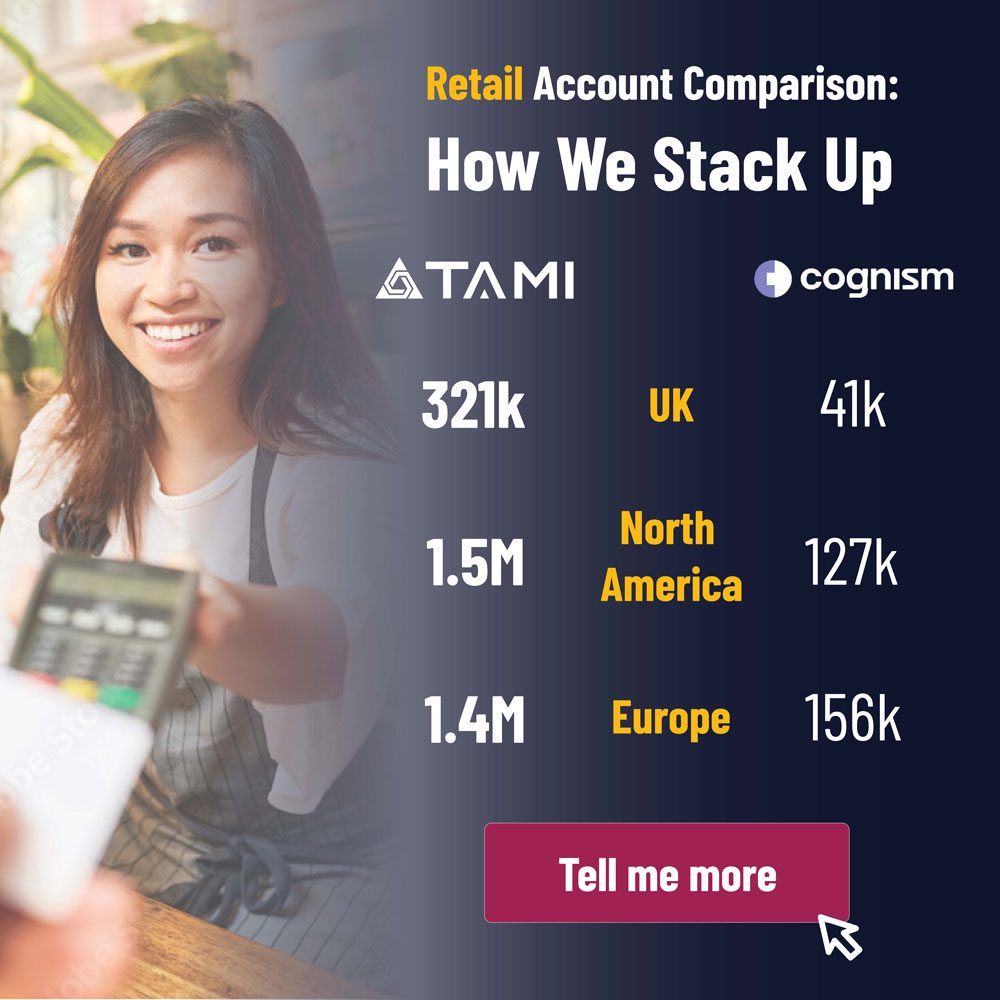
Competitive Payment Landscape: TAMI’s Discovery Through Patented Technology
22/05/2023
What role do third parties play in the payment industry?
22/05/2023The retail sector forms a crucial part of the global economy, directly employing more than 150 million people with global sales comprising around 9% of GDP.
However, the industry faces a constant state of upheaval; even before the disruption caused by COVID-19 it was facing numerous challenges, including the increasing dominance of e-commerce, rising rents and overheads, and the need to adapt to changing consumer behaviours.
The outbreak of the war in Ukraine and the resulting rise of inflation globally have significantly reduced disposable income of consumers, with the rise of ‘non-store retailers’ with the increased digitisation of the sector having massive implications for market leaders and SMEs alike.
Digitisation of the economy and sector trends
From e-commerce platforms to mobile apps, digital technologies have transformed the retail landscape, making it easier than ever for consumers to shop and interact with brands.
One of the most significant trends in the digitisation of retail has been the rise of online shopping. In 2015, online sales made up 7.4% of worldwide retail transactions, with this figure steadily climbing to 19.7% of all sales in 2022, according to data from Statista. The eCommerce sector itself is projected to grow at a rate of 12% between 2020 and 2030, with physical retailers growing at a comparatively smaller 3.6% year-on-year.
The rise in eCommerce is best illustrated by the continued growth of Amazon, with the online behemoth’s net income growing more than 20-fold between 2010 – 2020, rising from $34.2bn per year to an eye-watering $386bn.
Payment trends in the retail sector
Brits have embraced the contactless revolution, with data from Barclays showing 91 of all eligible transactions were made by contactless technology last year.
The pandemic has exacerbated the rise of a ‘cashless society’, with transactions increasingly being made directly via debit and credit cards or digital wallets. Around 10% of all retail payments in the UK are now made in cash, down from 27% of all payments in 2019. Seventy-six per cent of transactions are made on either debit or credit card and 10% with e-Wallets or digital/mobile wallets, with nearly two-thirds of adults believing the UK will be cashless by 2030.
For more insights into the changing nature of the eCommerce industry within the UK, access TAMI’s 2023 Market Report insights.
Opportunities in the sector
For larger retailers and groups shipping internationally, the rise of emerging markets presents a significant opportunity to expand their operations globally. As populations in these markets grow and middle-class incomes rise, consumers are becoming more sophisticated and demanding, creating new opportunities for retailers to introduce their products and services.
Changing customer trends also offer a range of opportunities for purely physical retailers. Consumers are becoming more conscious of the impact of their purchases on the environment and on the communities that produce them, and are seeking out products that are made with sustainable materials, produced using fair labour practices, and have a minimal impact on the environment. Nearly 90% of Gen X consumers say they are willing to spend an extra 10% or more for sustainable products, a notable rise from just 34% who said this just two years ago, according to Forbes.
Scrutiny is also growing around the rise of ‘fast fashion’, where inexpensive clothes are made to be worn for a short period of time before being discarded, resulting in high levels of waste and carbon emissions. Retailers and smaller artisan traders with a reputation for producing high-quality, locally-sourced and sustainable goods are well-placed to build their profiles in the sector – particularly with savvy social media channels, where an authentic and purposeful brand story is key to raising profile.
How can I target prospects in the retail sector?
TAMI is the leading lead generation and market intelligence service for the retail sector, with over 80% coverage than our closest competitors:

In addition to searching by filters such as contact location, title, business size and zip code, TAMI offers unique insights to search and segment targets within the retail sector, including:
- Retailers with eCommerce operations
- Retailers offering shipping options, including international shipping, next day delivery and click & collect services
- Retailers using specific marketing technology (MarTech) and website partners
- Use zip/postal codes to locate physical stores and contacts
- Search by parent companies only, allowing you to target key decision makers better-placed to have group-wide purchasing authority across larger retailers
To find out more about how TAMI can help you target organisations within the retail sector, please do sign up for a demo of the platform.









